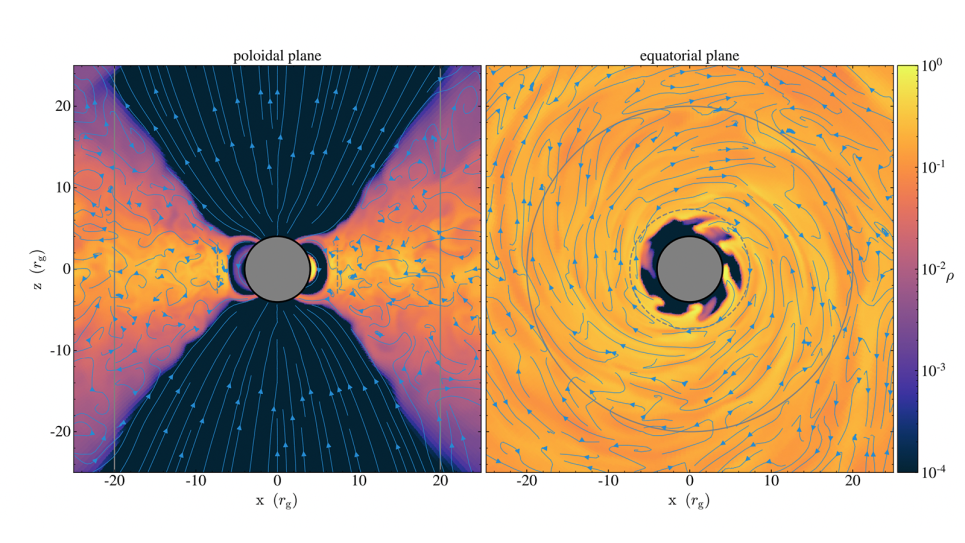
3D GRMHD simulation of an accreting and jet-launching neutron star, using a flexible set of perfect-conductor boundary conditions [65]. Line segments indicate the in-plane magnetic field.
This research aims to address this long-standing issue through first-principles simulations, focusing on the prospects of long-lived hypermassive neutron stars (HMNSs) as potential engines for short GRBs (sGRBs).
The detection of the multi-messenger binary neutron star (NS) merger, GW170817, confirmed the long-standing prediction linking NS-NS mergers to short bursts of gamma-rays (GRBs) powered by jets, marking the dawn of the multi-messenger era. This watershed event has opened new avenues for studying the Universe's expansion rate and the NS equation of state. Additionally, the radioactive decay-powered kilonova emission from GW170817 has established NS-NS mergers as significant contributors to heavy element nucleosynthesis in the Universe. However, the central engine — whether a black hole (BH) or a NS — powering these jets remains elusive.
This research aims to address this long-standing issue through first-principles simulations, focusing on the prospects of long-lived hypermassive neutron stars (HMNSs) as potential engines for short GRBs (sGRBs). The extended lifetime of HMNSs presents numerical challenges for advanced simulations over long timescales. Using state-of-the-art 3D general-relativistic magnetohydrodynamic simulations, this work will follow the outflows launched from an HMNS and compare them with those powered by BHs. This research has the potential to shed light on numerous mysteries: the central engine of sGRBs, the physical conditions at the collapse of the HMNS and those present at the time of BH formation, and provide means to distinguish between BH- and NS-powered jets.